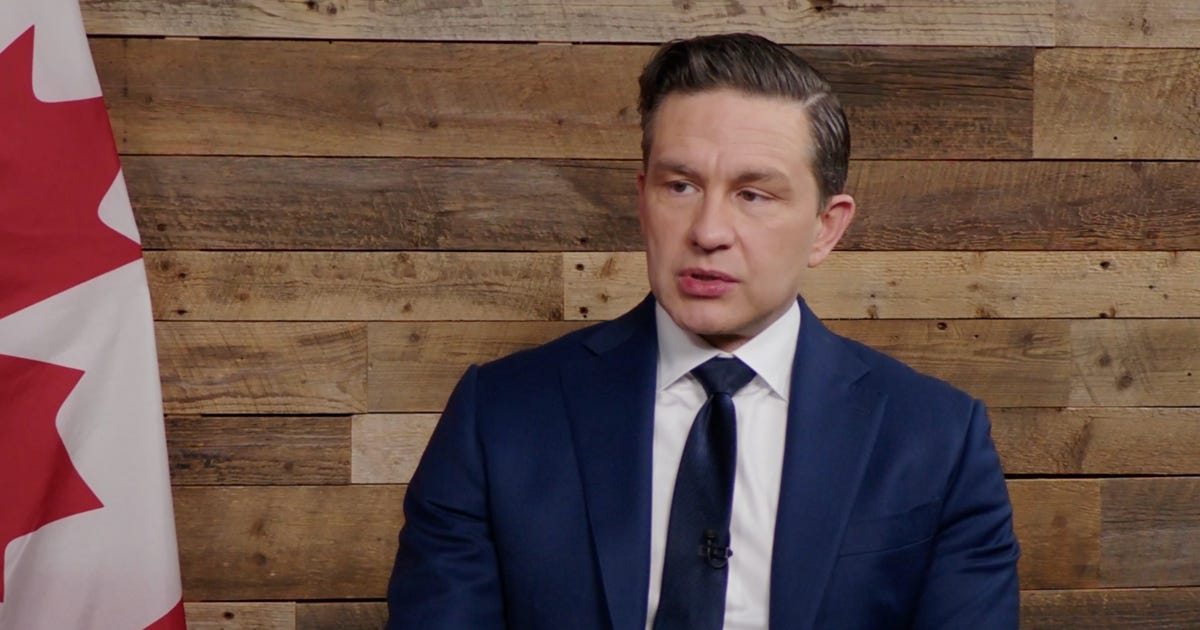EXCLUSIVE: Poilievre suggests capping immigration at Harper-era levels, deportations for wrongdoers
Poilievre has confirmed his plans to reduce immigration levels to Stephen Harper-era levels and deport those who break Canada’s laws while on temporary visas, in an exclusive interview with Juno News
Feb 13, 2025

Source: Juno News
Author: Cosmin Dzsurdzsa
Conservative Leader Pierre Poilievre has confirmed his plans to reduce immigration levels to Stephen Harper-era levels and deport those who break Canada’s laws while on temporary visas, in an exclusive interview with Juno News co-founder Candice Malcolm.
Juno News is a reader-supported publication. To receive new posts and support my work, consider becoming a free or paid subscriber.
On the broader issue of immigration levels, Poilievre stated that the current annual intake of permanent residents — set to reach 500,000 in 2025 — is unsustainable and has contributed to Canada’s housing crisis.
He proposed a return to the levels of previous Conservative governments, which were around 200,000 to 250,000 per year, aligning population growth with the number of new homes being built.
“It would be a lot more like the Harper numbers that were basically the same for 40 years before Trudeau took office — we were bringing in about 200,000 to 250,000 a year,” said Poilievre.

“We were building about the same number of homes as we were adding people, so we had a housing surplus. I would bring in a simple mathematical formula: we cannot bring in people faster than we add houses.”
According to Poilievre, the formula would be based on the homebuilding numbers from the prior year as well as population growth targets.
“I would actually make sure that we’re building housing surpluses over the next four years because that’s how we close the gap that has built up,” said Poilievre.
Poilievre also made it clear that his government would swiftly deport non-citizens who commit crimes while in Canada on temporary status. He emphasized that those engaging in violent acts, such as firebombing businesses or places of worship, should be immediately arrested and deported.
“I don’t know how anybody can disagree with that. If someone shows up in our country claiming to be a student or a temporary worker and they start firebombing coffee shops, bakeries, synagogues, or any other place, then they need to be immediately arrested and deported,” said Poilievre in reference to recent pro-Hamas protests rocking Canada.
“If someone is obviously a citizen, they should be prosecuted through our legal system and put in prison here in Canada for those sorts of crimes.”
Poilievre added the federal government also has to take the issue of illegal immigration seriously and expedite deportations for those found to be in Canada under false pretences.
“If someone comes in, makes a false asylum claim, and it gets rejected, they’re supposed to leave today,” said Poilievre.
“The challenge we’re going to face is that under nine years of the Carney-Trudeau Liberals’ open border policies, we now have millions of people whose permits are going to expire over the next two years. If they don’t leave, we have a very hard time even knowing they’re still here, finding them, and then carrying out a deportation.”
The Conservative leader, however, did indicate that among illegal immigrants there were “some among them that we do want to keep.”
“They could be a master’s graduate in computer engineering with a six-figure job in Kitchener-Waterloo, someone who has started a family, integrated, speaks the language. This is someone we want to keep,” said Poilievre.
“But we need to be able to make that decision ourselves through selection based on these criteria — not just by accident because people who are not eligible to stay decide they’re not going to leave.”
According to Poilievre, the Canadian government should implement further refugee reviews for claims, including what he calls a “last in, first out” approach.
“This is how it works: if you’re the last person to enter the country, your claim is immediately heard. Within a couple of weeks, if your claim is false, you’re sent back. What that does is send the signal to everyone who might come in the future that they’re going to be sent home automatically,” said Poilievre.
“The problem right now is that if someone gets in illegally — even if they’re not a real refugee, they’re not fleeing danger — they have seven or eight years of appeals, during which we’re paying for their hotels, lawyers, food, and healthcare, above and beyond what Canadians get.”

